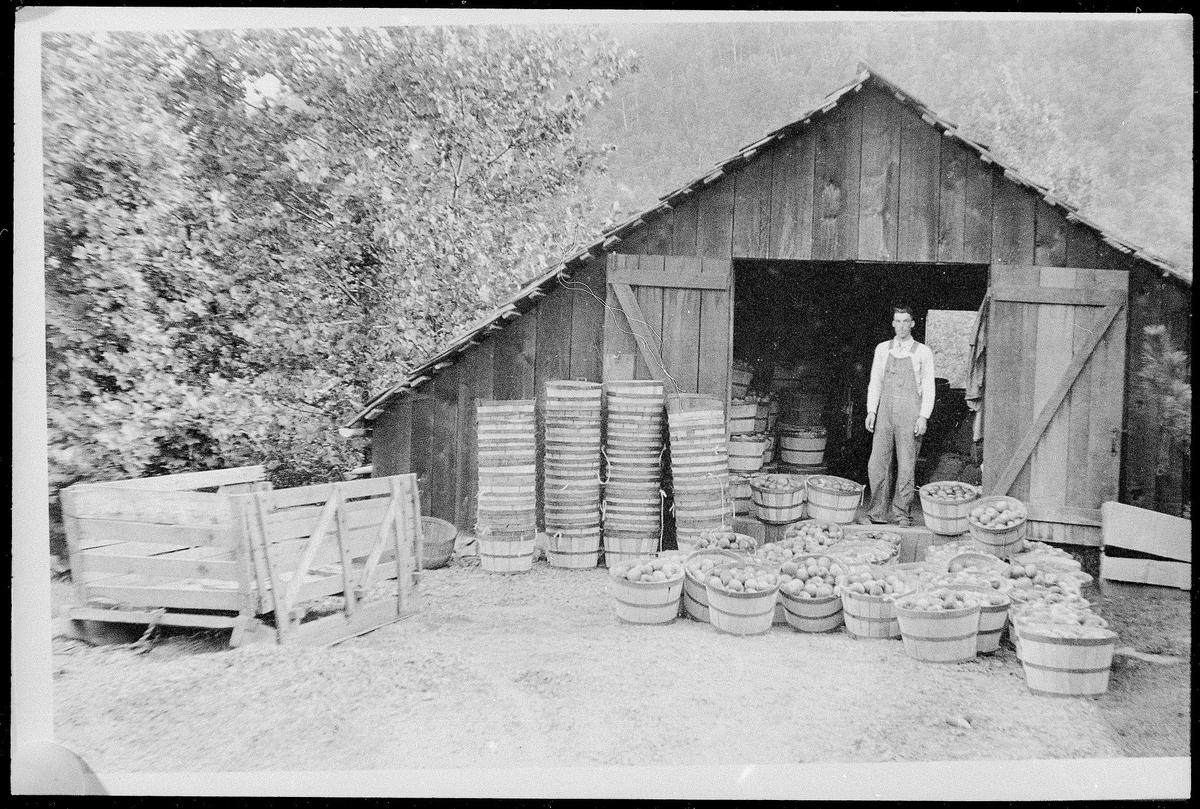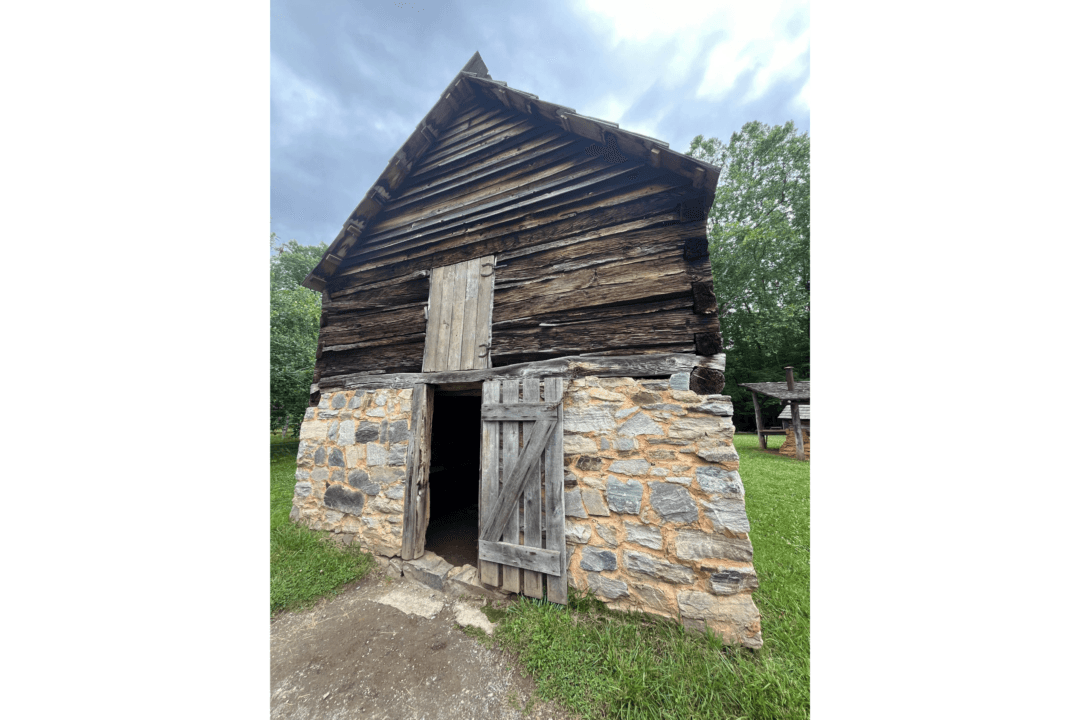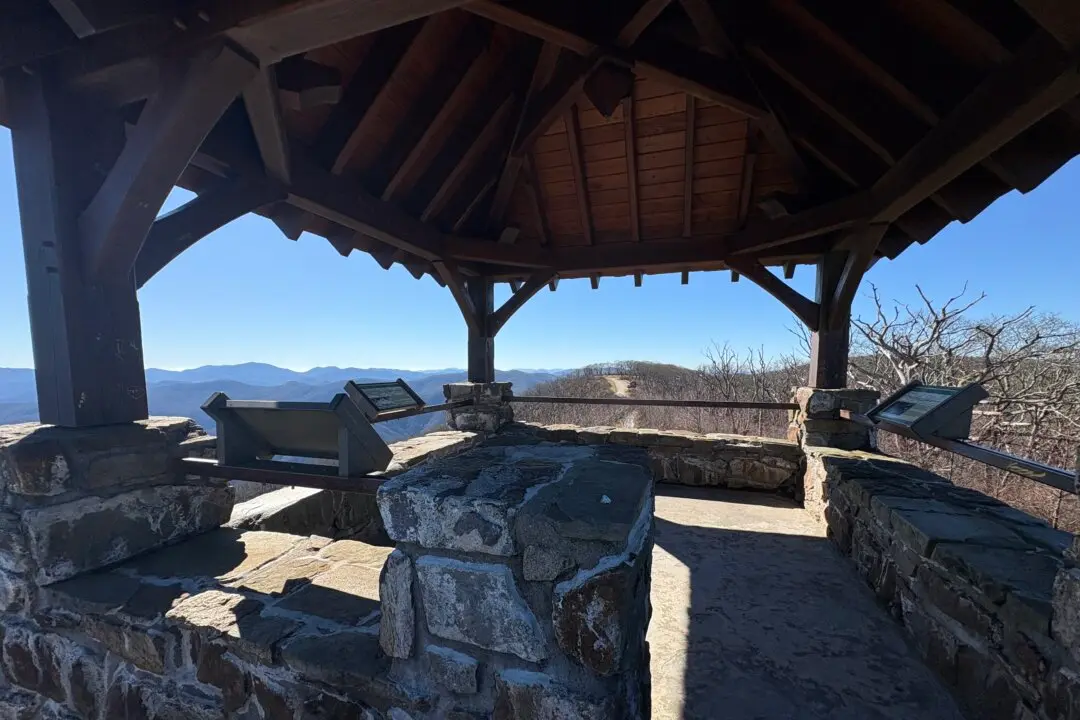Apples are a staple crop in many areas of the country, with at least 10 states considered top contenders. While Washington has led the nation in production since the 1920s, one of the top-10 growers is North Carolina, especially in its mountainous regions.

A man stands in front of his apple barn in this 1930s photo. National Park Service. Public Domain





